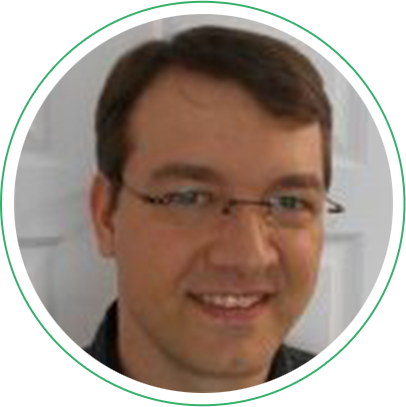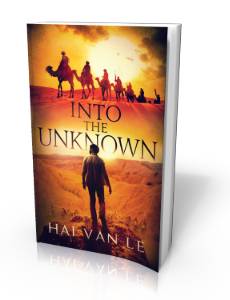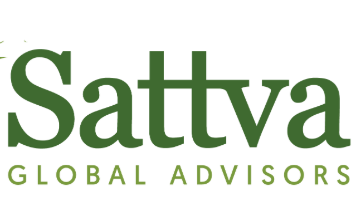

Canada

Set in 2011 Mali, Into the Unknown is Hai’s debut novel about a Canadian geologist – Jake Hall – held for ransom by Islamic fundamentalists in northern Mali.
Hall’s voyage to hell … and back sets in motion a chain of events which jeopardizes his employer’s project and rocks the country’s political foundation to the core.
Brent Hilscher is a process engineer with 14 years experience in gold, base metals, and oil sands operations. He has led teams, designed plants, and directed test programs. He has been responsible for mining project OPEX and CAPEX estimates, as well as overall project economic evaluations. He has served as Chairman for CMP Alberta and Technical Director for CIM Fort McMurray. He has led or co-led several industry conferences. In his spare time Brent has served as an officer in the Canadian Armed Forces, contributed to a NASA mining research project, and advised the World Bank on artisanal gold mining. In 2013 he won the Canadian Mineral Processor’s Bill Moore Award.
Brent brings a strong technical background to Sattva’s technical review team. Brent works to ensure projects are technically ready for investment. If they are not, he provides help and guidance to put potential mining projects on the right track.
Brent until recently was the Managing Director of Sacre-Davey Oil Sands Innovations. He resides in White Rock, BC with his wife and 4 children.

In the fall of 2005, I was working as Director of Corporate Development for a producer with a gold mine in Peru. The job entailed preparing financial projections, drafting press releases and putting management in front of institutional investors, among other duties.
By that time, I had amassed a great deal of skills and knowledge about the junior mining industry.
I had worked for other junior exploration and development companies active in Latin America before. And before that, I was editor of Inside Track, an independent investment publication focused on the mining industry.
In these roles, I saw firsthand how deals were structured, capital was raised and projects promoted. In my spare time, I had studied them in detail by cross-referencing various disclosure documents. I read the fine print, so to speak.
I could analyze financial statements as well as any analyst, having done advanced accounting & finance courses and completed the Canadian Securities Course.
I know what institutional sales people and investment bankers in a brokerage firm do. I know who some of their investors are and where they can be found.
Inertia being what it is, I would have been content to stay in that position for years to come had there not been a quirk of fate. Months earlier when it came time for salary negotiation, I had greatly angered my boss by making a high demand believing that in negotiation, it’s better to start high and then go lower, a technique known as anchoring.
The attempt backfired badly.
My boss kind of stopped talking to me. In hindsight, I know he was irritated with me. At the time, there was also a shareholder who had my boss’ ear. He had a daughter who needed a job. By the end of the year, I was out, replaced by his daughter.
As the saying goes, when one door closes, another one opens. Little did I know at the time that this was the catalyst for my new entrepreneurial career, a nudge to expand my horizons, the beginning of an amazing personal growth experience.
I had a young family then, with two boys. I was close to finishing my second undergraduate degree (in accounting) at night at the time.
What to do next? Look for a new job? Start my own business? I did all of these.
The timing to transition into something new was perfect in hindsight. For one thing, the industry was nearing a peak, driven by the much-hyped Commodity Supercycle fueled by supposedly never-ending double-digit Chinese growth.
There was lots of money floating around to finance the next promising project.
Timing is everything. There were certain important relationships that needed to be forged, lessons to learn and deals to be brokered. If I was still tied to my old employer, I would have missed all of these opportunities.
As I attended industry events and conferences, in the process of listening to and talking to people, I became a familiar face to some people. They trusted me enough to share with me important information about their needs – and the private projects they were working on.
Knowledge is power. Being in the middle and knowing the various needs of different players, I was in a position to meet their needs by bringing them together.
Within six years from that seminal date, together with my associates, we had arranged transactions in the gold, molybdenum and uranium space valued at about $140 million. Some of these projects were world-class in nature.
Notable among them was Lucky Jack (a world-class molybdenum project which enabled our client to raise $28.5 million); El Creston (another world-class molybdenum project acquired for U.S $30 million by our client who subsequently sold it for $195 million within a few years); a $10 million financing for the Santo Domingo iron/copper project in Chile which was subsequently bought by Capstone Mining for $685 million; uranium and gold projects in Paraguay, Mexico and elsewhere in Labrador, Canada.
To increase our firm’s profile, we set up a booth at PDAC, the world’s biggest mining conference. There, for nine consecutive years, I interacted with a wide range of players in the industry, getting exposed to new ideas, projects, and people from all over the world. I have seen brilliant successes and equally spectacular failures; people who go from zero to hero overnight and vice versa.
During the lean years in the industry, which came about after the Great Financial Crisis of 2008 and as gold languished at $1200 range for years, I focused on learning the art and psychology of (swing) trading. By then, I knew it’s an illusion that fundamental analysis alone is enough to help one succeed in the stock market.
I devoured books on technical analysis, the psychology of mastering the trade and biographies of great traders. I put that new knowledge into practice.
At one point, our firm had a modest-sized in-house trading division. (And to this day we still have a full-time competent trader to look after the firm’s capital.)
Now I could say I’m a conscious trader/investor with my own distinctive approach and philosophy refined from years in the trenches.
Although it may not seem apparent, along the way, I have also acquired the ability to raise large sums of money for advanced stage projects. In one recent mandate to raise $45 million bridge loan for a mine under construction, I was able to – within a period of six weeks – bring eight investors to the table. These were multinational banks, private equity firms, and specialized credit providers that had signed confidentiality agreements with our client.
To this day, whenever I’m confronted with a failure or any setback, I think back to that seminal event before my entrepreneurial career and remember that, as difficult as predicting the future, things are working out for my highest good somehow.
I’m grateful for the numerous lessons learned, the experiences in foreign countries and the people I have met. Together they have helped me become more flexible, open-minded and more appreciative of what we have here in Canada.

Sattva Global Advisors Inc. is an international financial advisory firm focused on cross-border M&A, strategic partnerships,
and corporate finance in the mining industry. We leverage global connections, game-changing ideas, and deep industry
knowledge to help clients achieve transformational growth.
© 2021 Sattva Global Advisors Inc. Suite 908, 938 Howe Street, Vancouver, BC, V6Z 1N9